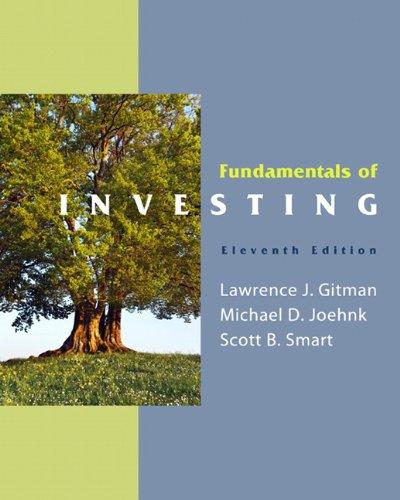P5.17 Jay is reviewing his portfolio of investments, which include certain stocks and bonds. He has a
Question:
P5.17 Jay is reviewing his portfolio of investments, which include certain stocks and bonds. He has a large amount tied up in U.S. Treasury bills paying 3%. He is considering moving some of his funds from the T-bills into a stock. The stock has a beta of 1.25. If Jay expects a return of 14% from the stock (a little better than the current market return of 13%), should he buy the stock or leave his funds in the T-bill? P5.18 The risk-free rate is currently 7%, and the market return is 12%. Assume you are consid- ering the following investments. Investment Vehicle A B D E
a. Which vehicle is most risky? Least risky? Beta 1.50 1.00 0.75 2.00
b. Use the capital asset pricing model (CAPM) to find the required return on each of the investment vehicles.P5.16 Use the capital asset pricing model (CAPM) to find the required return for each of the fol- lowing securities in light of the data given. Security Risk-Free Rate Market Return Beta 5% 8% 1.30 8 13 0.90 9 12 -0.20 10 15 1.00 6 10 E 0.60 P5.17 Jay is reviewing his portfolio of investments, which include certain stocks and bonds. He has a large amount tied up in U.S. Treasury bills paying 3%. He is considering moving some of his funds from the T-bills into a stock. The stock has a beta of 1.25. If Jay expects a return of 14% from the stock (a little better than the current market return of 13%), should he buy the stock or leave his funds in the T-bill?
Step by Step Answer:

Fundamentals Of Investing
ISBN: 9780136117049
11th Edition
Authors: Lawrence J. Gitman, Michael D. Joehnk, Scott B. Smart, Scott J. Smart





